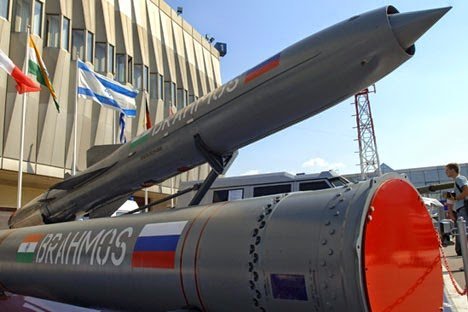Capable of reaching speeds of 3,600 miles per hour or more, hypersonic weapons will "revolutionize military affairs in the same fashion that stealth did a generation ago and the turbojet engine did a generation before," according to a study released Tuesday by the Air Force Association's Mitchell Institute for Aerospace Studies. In other words: Hypersonic weapons could very well redefine the rules of modern warfare.
Not surprisingly, the US Air Force has called for a massive investment in hypersonic weapons development. These weapons would give the US an incredible edge over any potential military foe:
Once realized, the incredibly fast projectiles would allow the U.S. to strike targets deep in enemy territory, even if it were defended by anti-air systems, simply because of their speed would cut hours-long transcontinental flights down to minutes. The weapons also could lessen the threat to U.S. airmen, since piloted aircraft like fighter jets or bombers would be able to do their job faster.But the US isn't the only country developing hypersonic weapons:
China and Russia are already investing in the technology, the report notes. Beijing has conducted at least five tests of its Wu-14 hypersonic strike vehicle in the last two years. That platform consists of launching a rocket to the upper atmosphere, then releasing a glider that reaches hypersonic speeds upon descent.As we reported last month, Russia already has plans to to upgrade its nuclear-powered Project 11442 Kirov-class battlecruiser Pyotr Veliky with a new hypersonic anti-ship cruise missile. The new Mach 5.0-capable 3M22 Zircon missiles would replace the ship's existing 390-mile range P-700 Granit supersonic anti-ship missiles.
Meanwhile, Moscow plans to tests its new hypersonic weapon by 2020.
However, the upgrades are expected to be completed until 2022.
But even with its far larger budget, the Pentagon projects a similar timeframe for its own hypersonic weapons program:
The authors [of the US Air Force study] envision an air-launched medium-range hypersonic strike weapon in the 2020s; a more-capable offensive, intelligence-gathering weapon in the 2030s; and an "eventual goal of a persistent, reusable hypersonic" aircraft in the 2040s.Russia's ability to keep up with the US in hypersonic development could be critical to deterring future provocations by NATO and the west.
In other words, we are beginning a new, hypersonic arms race.




Comment: Always searching for the newest and best ways to kill thousands of people from thousands of miles away.